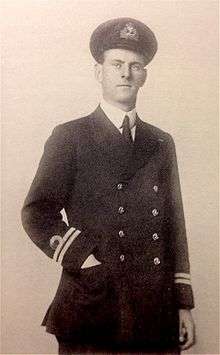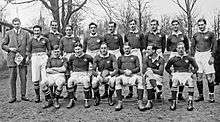Cecil Abercrombie
 | |||||||||||||||||||||||||||||||||||||||||||||||||
| Full name | Cecil Halliday Abercrombie | ||||||||||||||||||||||||||||||||||||||||||||||||
|---|---|---|---|---|---|---|---|---|---|---|---|---|---|---|---|---|---|---|---|---|---|---|---|---|---|---|---|---|---|---|---|---|---|---|---|---|---|---|---|---|---|---|---|---|---|---|---|---|---|
| Date of birth | 12 April 1886 | ||||||||||||||||||||||||||||||||||||||||||||||||
| Place of birth | Mozufferpore, British Raj | ||||||||||||||||||||||||||||||||||||||||||||||||
| Date of death | 31 May 1916 (aged 30) | ||||||||||||||||||||||||||||||||||||||||||||||||
| Place of death | at sea, aboard HMS Defence | ||||||||||||||||||||||||||||||||||||||||||||||||
| Rugby union career | |||||||||||||||||||||||||||||||||||||||||||||||||
| Playing career | |||||||||||||||||||||||||||||||||||||||||||||||||
| Position | Forward | ||||||||||||||||||||||||||||||||||||||||||||||||
| Professional / senior clubs | |||||||||||||||||||||||||||||||||||||||||||||||||
| Years | Club / team | Caps | (points) | ||||||||||||||||||||||||||||||||||||||||||||||
| United Services Portsmouth | |||||||||||||||||||||||||||||||||||||||||||||||||
| National team(s) | |||||||||||||||||||||||||||||||||||||||||||||||||
| Years | Club / team | Caps | (points) | ||||||||||||||||||||||||||||||||||||||||||||||
| 1910–1913 | |
6 | 3 | ||||||||||||||||||||||||||||||||||||||||||||||
Military career | |||||||||||||||||||||||||||||||||||||||||||||||||
| Allegiance |
| ||||||||||||||||||||||||||||||||||||||||||||||||
| Service/branch |
| ||||||||||||||||||||||||||||||||||||||||||||||||
| Years of service | 1902–1915 | ||||||||||||||||||||||||||||||||||||||||||||||||
| Rank | Lieutenant | ||||||||||||||||||||||||||||||||||||||||||||||||
| Unit | |||||||||||||||||||||||||||||||||||||||||||||||||
| Battles/wars | Battle of Jutland | ||||||||||||||||||||||||||||||||||||||||||||||||
| Memorials | Plymouth Naval Memorial | ||||||||||||||||||||||||||||||||||||||||||||||||
Lieutenant Cecil Halliday Abercrombie (12 April 1886 – 31 May 1916) was a rugby player, who represented Scotland and United Services RFC. He was also a first-class cricketer, playing for Hampshire.
Born in Mozufferpore, Indian Empire, Abercrombie was the son of an Indian Police officer. He attended Berkhamsted School and then underwent naval officer training in Dartmouth. Passing out in 1902, he went aboard HMS Hyacinth, joining the British campaign in Somaliland, and was part of the force that captured "Mullah" Hassan's stronghold at Illig in 1904.
He won six caps for Scotland at rugby between 1910 and 1913, scoring a try in the match against France in 1911, which was nevertheless the first victory for the French over any of the Home Nations teams. In cricket, he played 16 matches for Hampshire, scoring 4 centuries, with a high score of 165 runs.
In the First World War, he was aboard HMS Defence at the Battle of Jutland on 31 May 1916. The ship was struck by German fire, exploded and sank with the loss of all men, including Abercrombie. He is remembered with honour on the Plymouth Naval Memorial.
Early life
Cecil Abercrombie was born on 12 April 1886 in Mozufferpore, Indian Empire, to Walter Abercrombie, an officer in the Indian Police, and Kate Abercrombie.[1] He attended Allan House, Guildford, then Berkhamsted. On leaving school, Abercrombie joined the Royal Navy, undergoing officer training at Britannia Royal Naval College, Dartmouth. Both at Berkahmstead and Britannia, he excelled in cricket and rugby, playing in the first XI and XV for both. At Britannia he won in the high jump, long jump, racquets, fives, and swimming.[2]
Passing out of Britannia in 1902, Abercrombie served aboard HMS Hyacinth. In April 1904, under the command of Captain (later Rear Admiral) Horace Hood, he was in the landing party which captured "Mullah" Hassan's stronghold at Illig, on the east coast of Somaliland (present day Somalia), part of the protracted Somaliland Campaign of 1900 to 1920.[3] Abercrombie's service earned him the Africa General Service Medal with clasp.[2]
Rugby union

Cecil Abercrombie played for United Services RFC and was capped six times for Scotland between 1910 and 1913. He played as a forward, and was said to have 'abundant energy... a splendid physique, great speed and height, and a good pair of hands'.[2] He tackled hard and low, and was also an adept place-kicker.[4]
For the Five Nations Championship game on 2 January 1911, Scotland was away to France at Colombes. The match was of particular significance for the French, who had never before beaten any of the Home Nations teams. The Scots came out strong, and through the play of the forwards, scored the first try within moments of the start. Soon after, the French scored a converted try, and took the lead, and then a second and third try, putting them 11–3 ahead. Shortly before half time, the ball came out from a maul to Abercrombie, who broke the French defensive line and scored, the conversion bringing the tally to 11–8 to France at the interval. After the break, a dropgoal by Pearson gave Scotland a one-point lead, 11–12, but the French responded with another converted try, taking them ahead, 16–12. With 15 minutes remaining, a Scottish try closed the gap to 16–15.[5] The French were leading and on the verge of winning for the first time when Abercrombie crossed the French try line a second time, but seeking to get nearer the posts,[lower-alpha 1] he ran back again over the line and was tackled without having grounded the ball, giving the French a one-point margin of victory.[6]
Abercrombie played a second time against France, at Parc des Princes on 1 January 1913. Ahead of the game, the French press wondered if the victory two years earlier at Colombes was to be repeated.[7] The French scored the first try in the first five minutes, but the Scots scored twice in response and finished the first half leading 3–8. After another Scottish try at the start of the second half, Abercrombie twice attempted to kick a drop goal but was unsuccessful. Then, from a scrum, Abercrombie intercepted the ball from a French attack inside the Scottish half. Unable to run the length of the field, he passed the ball to Gordon, who passed it on to Steward, and he scored the fourth Scottish try. A final try sealed the victory for Scotland, 3–21.[8]
International appearances
| Opposition | Score | Result | Date | Venue | Ref(s) |
|---|---|---|---|---|---|
| 0–14 | Won | 26 February 1910 | Belfast | [9] | |
| 5–14 | Lost | 19 March 1910 | Inverleith | [10] | |
| 16–15 | Lost | 2 January 1911 | Colombes | [11] | |
| 10–32 | Lost | 4 February 1911 | Inverleith | [12] | |
| 3–21 | Won | 1 January 1913 | Parc des Princes | [13] | |
| 0–8 | Lost | 1 February 1913 | Inverleith | [14] |
Cricket
Abercrombie was a right-handed batsman and right arm medium pace bowler. He played for Hampshire County Cricket Club in 1913. He scored 126 in his debut innings against Oxford University. His overall batting record in 16 matches included four centuries and two half centuries, and his highest tally was 165 runs against Essex, averaging over 40. He also played for the Army and Navy in 1910, against a combined Oxford and Cambridge Varsity XI, and for the Royal Navy, against the Army, in 1912 and 1913.[15][16]
First World War and death
At the outbreak of the First World War, Abercrombie was on the Mediterranean station, returning to the UK early in 1915. At the Battle of Jutland on 31 May 1915, he was aboard HMS Defence, the flagship of Rear Admiral Sir Robert Arbuthnot. Defence drew fire from several enemy vessels, away from the main battle fleet: the ship's magazines were hit and exploded, and the ship sank with the loss of all men, including Abercrombie.[3][17]
Abercrombie is remembered with honour on the Plymouth Naval Memorial.[1] He left behind a widow, Cecily Joan Abercrombie, née Baker.[16]
See also
- List of cricket and rugby union players
- List of international rugby union players killed in action during the First World War
Notes
- ↑ Scoring a try nearer the posts makes it easier for the kicker to convert the try.
References
- 1 2 "Casualty Details: Cecil Abercrombie". Commonwealth War Graves Commission.
- 1 2 3 Sewell 1919, p. 17.
- 1 2 McCrery 2014.
- ↑ Sewell 1919, pp. 17–18.
- ↑ Frantz-Reichel (3 January 1911). "France contre Écosse". Le Figaro. p. 1. Retrieved 30 April 2016.
- ↑ Sewell 1919, p. 19.
- ↑ "La Vie Sportive – Football Rugby". Le Matin. 24 December 1912. Retrieved 30 April 2016.
- ↑ "Le quatrieme match de football rugby France contre Écosse". Le Matin. 2 January 1913. Retrieved 30 April 2016.
- ↑ "Rugby Union – ESPN Scrum – Ireland v Scotland at Belfast". ESPN scrum.
- ↑ "Rugby Union – ESPN Scrum – Scotland v England at Inverleith". ESPN scrum.
- ↑ "Rugby Union – ESPN Scrum – France v Scotland at Colombes". ESPN scrum.
- ↑ "Rugby Union – ESPN Scrum – Scotland v Wales at Inverleith". ESPN scrum.
- ↑ "Rugby Union – ESPN Scrum – France v Scotland at Parc des Princes". ESPN scrum.
- ↑ "Rugby Union – ESPN Scrum – Scotland v Wales at Inverleith". ESPN scrum.
- ↑ "The Home of CricketArchive".
- 1 2 "Scottish Rugby International Casualties" (PDF).
- ↑ Sewell 1919, pp. 19–21.
Bibliography
- Sewell, Edward Humphrey Dalrymple (1919). The Rugby Football Internationals Roll of Honour. London, Edinburgh: T. C. & E. C. Jack.
- McCrery, Nigel (2014). Into Touch: Rugby Internationals Killed in the Great War. Pen and Sword. ISBN 1473833213.
External links
- Cecil Halliday Abercrombie at ESPNscrum
- Player profile: Cecil Abercrombie from ESPNcricinfo
- Player profile: Cecil Abercrombie from CricketArchive